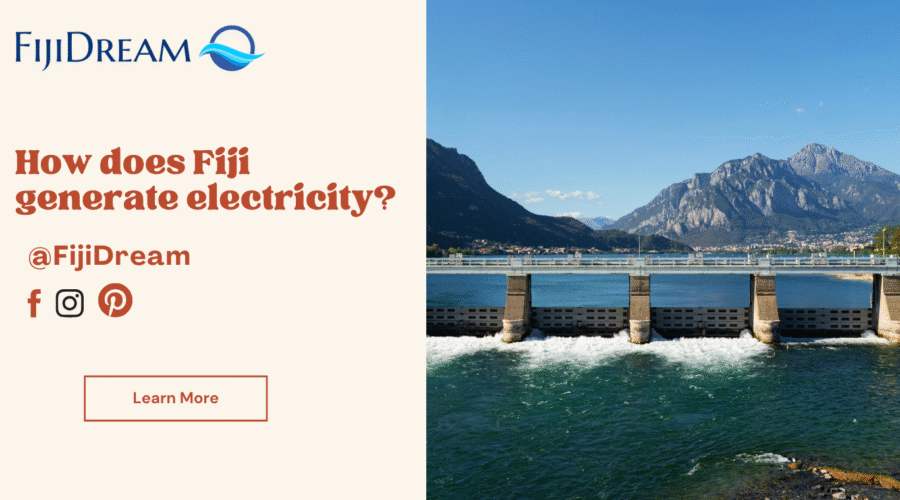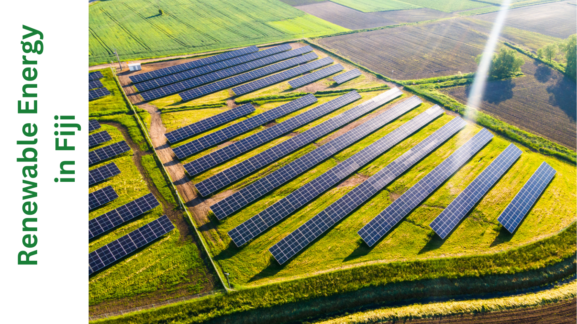How does Fiji generate electricity?
You know, when you dream of Fiji, what do you see? I’ll bet it’s white sand beaches and blue water. You’re probably not picturing power lines and generators. But here’s the thing—someone has to keep the lights on in paradise.
That electricity is what makes modern Fiji possible. It powers the neighborhood health clinic, keeps your hotel room cool, and enables children to complete their homework after dark. The story of energy resources in Fiji is fundamentally shaped by this challenge: it is extremely difficult to provide power to everyone in a country with so many islands, and this difficulty impacts everything from tourism to healthcare.
Hydropower: Fiji’s Energy Workhorse
The biggest slice of Fiji’s electricity pie comes from water. It’s funny how geography decides your fate sometimes. Take Fiji’s hilly landscape and all that heavy rainfall—it was almost inevitable that Fiji would turn to hydropower. And that’s precisely what happened—it’s now their primary renewable energy source.
The Monasavu Dam is in the middle of it all, hidden away in the mountains. It was built in the 1980s, and it’s been absolutely central to powering the country since.
The beauty of the idea is that it is simple. Power is produced by releasing water from the reservoir, which turns a few turbines. Moreover, more than half of Fiji’s power is produced by this one dam when the rains fall as they should. That’s not a little victory; for an island nation like Fiji, it’s a major benefit for the environment. It’s no wonder that hydropower has become the cornerstone of energy resources in Fiji.
Of course, water is a blessing and a curse. When drought hits, reservoir levels drop and output falls. That’s when Fiji leans on its backup options — and those backups often involve imported fuel.
The Diesel Dilemma: A Necessary Evil
Let’s be honest, diesel gets a bad rap for good reason. It’s expensive to import, it’s dirty, and on paper, it seems like the last thing you’d want. But in the islands, the story is different. For many smaller, remote communities, a diesel generator isn’t just an option; it’s like a lifeline.
Stringing a power line from the main island is a financial fantasy. So, that loud, smelly generator? It’s what powers the clinic, the school, and the homes. Even on the main grid, when the rains don’t come and the hydro dams run low, diesel is what keeps the lights on.
The downside hits right in the wallet. Fiji spends a fortune every year just to import the fuel, not to mention the headache of getting barrels across stormy seas. Everyone wants to phase it out, and you can see why. But the reality is, until we have something better that can reach every island, diesel is a frustrating part of life we can’t just wish away.
So, the story of energy resources in Fiji has long been a tale of two giants: water and diesel.
New Energy on the Block
Alongside the big hydro dams and the dependable diesel, newer players are slowly making their mark.
- Solar: This one’s a no-brainer. Fiji has sunshine in abundance. You’re starting to see panels on village rooftops, powering schools, and even some resorts use them as a badge of honor to attract tourists who care about the environment.
- Biomass: Fiji’s got a long history with sugarcane. The remaining stalks are now burnt to generate electricity rather than being wasted. It’s a clever strategy to increase the value of the farms we now own.
- Wind: There’s a small wind farm down near Sigatoka, which is a great experiment. The wind can be a bit fickle here, so it’s not the most reliable source yet, but it’s proof we’re looking at every possibility.
None of these is running the whole country yet, but they’re growing. Together, they represent the promising new frontier of renewable energy in Fiji. And their real value is in chipping away at our need for imported diesel while helping us live up to our image as a nation that protects its environment.
The Challenges of Powering an Island Nation
Keeping the lights on across Fiji’s many islands is a challenge shaped by the sea itself. The country isn’t one piece of land but a collection of separate communities, each needing its own power source. Stringing cables underwater to connect everyone is a financial non-starter. This scattered geography is the first and biggest hurdle.
Then comes the delicate dance of supply. Fiji mostly uses hydropower. But when rain is scarce, the country turns to diesel. This creates a tricky dependency. Fiji’s electricity costs become tied to global fuel prices, meaning events in far-off markets can send bills soaring locally.
Nature itself is another constant test. The threat of cyclones hangs over everything. These are not only storms; they are dreadfully frequent occurrences of catastrophe. The electricity grid might be destroyed by a direct strike, which would flatten transmission lines, break solar arrays, and choke hydro intakes with debris. As repairs are made over difficult terrain, the lengthy and difficult restoration process can leave remote towns without energy for weeks at a time.
The future of energy resources in Fiji is incredibly ambitious: 100% renewable by 2030. With all these issues, that goal takes some serious nerve. You can’t just pick one fix. The only way it works is by trying a bit of everything all at once: shipping solar panels to the islands stuck on diesel, patching up the old Monasavu dam, figuring out how to burn cane trash for power, and getting companies to chip in their own cash.
Let’s be clear, though: money isn’t the main issue here. It is a survival tactic. And the crazy thing is, while everyone else is just talking, a tiny place like Fiji is actually doing it.
And critically, this isn’t a path being walked alone. Fortunately, the World Bank and Asian Development Bank contribute vital financial and technical support, and close allies like Australia and New Zealand also chip in with consistent, direct help.
And with this, a tiny country like Fiji can actually lead the pack on switching to renewables, with the label of using renewable energy in Fiji.
So, where is Fiji right now? The honest answer is… in the middle of it. Hydropower still provides the majority of our electricity. The diesel generators take over when that is insufficient. Also, you see that wind and solar energy are always increasing.
Fiji is dedicated to proving that size does not matter when it comes to a sustainable energy future. It is challenging, really. A single cyclone may ruin everything. But the goal is crystal clear: get off diesel, for good.
For Fijians, this isn’t just some government project. It’s about breathing easier with cleaner air. It’s about the lights staying on after a storm.
So next time Fiji comes to mind, sure, picture the beaches. But also picture a solar panel on a school roof. Picture a community working together. Electricity means more to Fiji than simply turning on lights. It’s about creating a solid and safe future for their children. The evolution of energy resources in Fiji is about more than megawatts. Simply said, it’s about hope.


